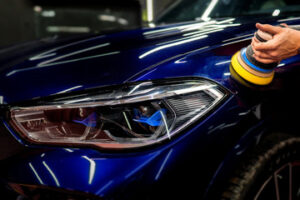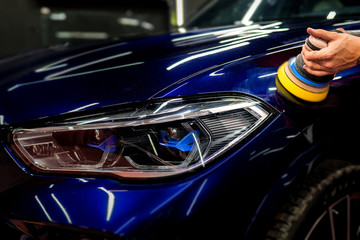Keeping your car well-maintained with regular auto detailing goes beyond cosmetic benefits. It helps extend the lifespan of your vehicle, prevents major mechanical issues, and increases resale value.
Professional detailers set up packages and prices in advance to make their business more efficient. They also use a business management app like Mobile Tech RX to create perfect estimates and invoices. Click https://www.perthdetailer.com.au/ to learn more.

When detailing your car, professional detailers work to remove every last speck of dirt and grime, restoring your vehicle to its irresistible state. Unlike a regular car wash, which may only wipe away the surface dirt, this meticulous process includes exterior cleaning and waxing to protect the paint, interior vacuuming, steaming, removing stains, and even engine detailing to improve performance.
Many detailers hand wash cars, using high-pressure hoses and buckets of soapy water rather than sending them through an automated carwash. This allows them to spot and clean especially dirty areas, like bug residue on windshields or the sticky tar on wheels. They can also use special brushes, such as hog hair or terry cloth, to clean hard-to-reach areas, like vents and dials. Depending on the service you choose, fabric protection services may also be included, in which case detailers will use products specifically designed for your seats and carpets (whether they are leather or cloth).
Over time, dust, sun, spills, and stains can damage your upholstery. If left untreated, these stains can be permanent. During the detailing process, however, professionals use upholstery shampoos and fabrics guards to help prevent damage from occurring in the first place. This keeps your upholstery in better condition for longer and contributes to a comfortable, appealing driving experience.
In addition to vacuuming all the seats, carpets and mats in your vehicle, detailers will also clean the dash and door panels. They’ll clean the rims and windows, and will take extra care when working on intricate areas such as the steering wheel or dashboard. They’ll also clean the engine, removing any grease and oil stains and checking for signs of leaks or other problems.
A dirty engine can lead to overheating and other mechanical issues, so it’s important to keep it as clean as possible. In addition, a clean engine can be more appealing to potential buyers when you’re ready to sell your car.
Whether you’re a car buff or just a regular driver, you know that driving a shiny vehicle is always more satisfying than having one that’s dingy. The difference is in the effort and care that goes into the process of cleaning and polishing a car. This type of service is more than just a way to make a car look good, as it can help extend the resale value and prevent damage to the vehicle.
The steps to detailing a vehicle may vary from one company to another, but the majority of detailers follow a similar process to reach that sparkly finish. They start by washing the vehicle, and then they move on to removing scratches and stains from the paintwork. Once the body is clean, they polish and wax it, and finally, they seal the surface.
In addition to their traditional detailing services, many auto shops offer specialized products, like clear bra film, ceramic coating, and wheel tire treatments. They also provide decontamination detailing and eco rinseless wash services. Some of them even have a mobile unit to cater to clients’ needs.
offers interior and exterior auto detailing, as well as steam wash and hand waxing. The company uses environment-friendly cleaning products and saves 30-40 gallons of water per session. They also use steam to sanitize the vehicles, which eliminates viruses, bacteria, and molds and reduces the spread of germs.
Once the surface of the car is smooth and clean, the detailing technician moves on to the windows and wheels. They remove dirt, grime, and stains from these areas using high-powered washers. They then rinse and wipe the rims, doors, and glass to ensure they’re clean.
The next step in the exterior detailing process is clay work, where the detailer removes traces of overspray, soap scum, and other particles that the rinse didn’t get off the body of the vehicle. Then they polish the paint to restore its original shine, and then they apply a sealant to protect the surface of the car from scratches, sun damage, and other environmental elements.
It’s no secret that car detailing helps preserve resale value, protects interior surfaces, and keeps your vehicle running like new. But you may not realize that auto detailing has some hidden health benefits, too. A clean and organized car reduces stress during daily commutes, creates a pleasant environment to drive in, and promotes mental clarity.
Professional detailers use a variety of products and techniques to ensure that every part of your vehicle is clean. This includes not only removing visible dirt, dust, and debris, but also treating the air in your vehicle for improved breathing and overall wellness. In addition, a clean and sanitary driving environment increases safety by reducing distractions and promoting alertness while on the road.
The smallest contaminants, such as tree sap or road tar, can cause serious damage to the exterior surface of your car if left unchecked. Professional detailers can spot and treat these elements before they cause significant damage, preventing costly repairs later.
Leather, vinyl, and plastic interiors can degrade over time due to harsh environmental factors, such as UV rays or acid rain. During the auto-detailing process, professionals apply coatings and sealants to prevent fading, cracking, and discoloration of these materials, extending their lifespan.
In addition to protecting and preserving your car’s materials, regular detailing keeps your vehicle’s interior looking and smelling clean and fresh. Dirty carpets, upholstery, and seats can become musty and unpleasant smelling, especially with frequent use. Having these surfaces professionally cleaned with disinfectants and other cleaning products removes these contaminants, resulting in a fresh and pleasant-smelling interior.
A dirty car can harbor bacteria, which can contribute to a number of health problems. Microscopic bacterial contaminants, such as odor-causing and disease-causing organisms, can easily hide on fabric, leather, and smooth surfaces. Regular auto-detailing with special bacteria-killing shampoos eliminates these contaminates and protects you and your passengers’ health. This is why it’s important to prioritize auto-detailing as a necessary and cost-effective car maintenance activity.
The resale value of your vehicle is one of the biggest factors when it comes to choosing to sell or trade in your car. The appearance and condition of the exterior and interior are the primary elements that determine resale value. Investing in auto detailing services can make your car look brand new and increase its appeal to buyers, which can help you get more money at the dealership or during a private sale.
Regular detailing services can also help prevent major mechanical issues and protect your upholstery. These maintenance services can save you a lot of time, hassle, and money in the long run. It is much easier and cheaper to keep your car looking good than it is to repair a messed up paint job or rusty frame after trading it in for a new one.
A detailed exterior and clean interior can make your car look brand new, resulting in higher resale value. This is because potential buyers and dealers will see that your car has been well-maintained, which can give them confidence in its overall condition and reliability. This, in turn, can lead to a better trade-in or selling price for you.
Detailing can also improve your car’s resale value by eliminating unpleasant odors and removing stubborn stains. This is important because lingering odors from smoking, pets, or food can be off-putting to potential buyers and may lower their perceived value of your car. A professional detailer can thoroughly clean the interior of your car, including all the nooks and crannies, and remove any stains that have accumulated over time.
Although resale value is not the only factor that determines the final selling price of your vehicle, it plays a significant role. Taking care of your car’s appearance, maintaining regular service records, and keeping a record of all detailing services you have had done can all contribute to increasing the value of your car. Adding extras like premium audio systems or infotainment displays can also help boost your car’s resale price. However, it is important to remember that a high resale value doesn’t guarantee that you will be able to sell your vehicle for the amount you want.


 Paint
Paint